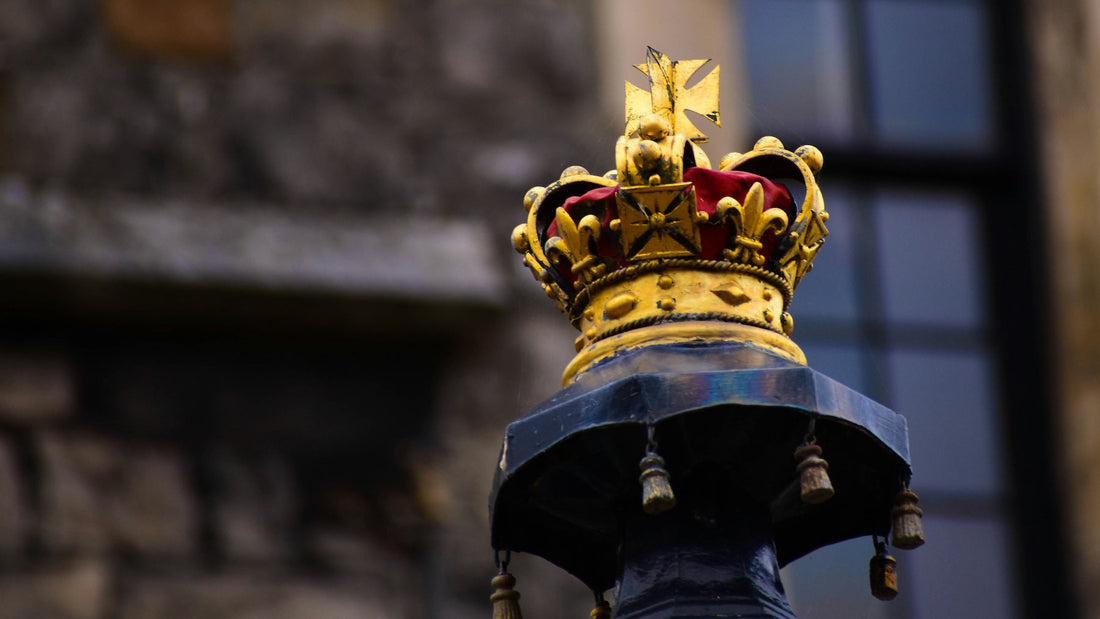
Left-Handed Royals
Share
Tradition, Rebellion, and Legacy
What happens when left-handers—often celebrated for creativity and defiance—find themselves navigating the tradition-bound world of royalty? The result: fascinating stories that span dynasties and nations. From kings forced to switch writing hands to queens who defied expectations, left-handed royals across history have shown that even in the most rigid institutions, individuality thrives.
Curious about which members of the royal family are left-handed—or how many royal families have lefties among them? While left-handers are a minority, their impact on monarchies worldwide is anything but. Let’s explore how these remarkable rulers turned a so-called “sinister” trait into an enduring legacy.

King Louis XVI (1754–1793)
Louis XVI, the ill-fated French king, wasn’t just known for losing his head during the French Revolution—he was also left-handed. Louis had a knack for locksmithing, a hobby where his left-handed dexterity likely shone.
Unfortunately, his talents didn’t extend to solving the political and economic crises of pre-revolutionary France. But as the last king of the Ancien Régime, Louis’s left-handedness is another detail that sets him apart in history’s ledger of doomed rulers.

Queen Victoria (1819–1901)
Queen Victoria’s left-handedness adds to her already formidable legacy. As one of Britain’s longest-reigning monarchs, she presided over the Victorian era—a period of industrial expansion, empire-building, and cultural transformation.
Despite societal biases against left-handers, Victoria never let her handedness hinder her rule. In fact, her pragmatic and commanding leadership style exemplified how left-handedness could symbolize adaptability and strength.

King George VI (1895–1952)
If anyone proves how left-handedness shaped a royal, it’s King George VI. As a child, George was forced to write with his right hand—a common practice at the time that only exacerbated his stammer.
Despite this, George rose to the throne under extraordinary circumstances, leading Britain through World War II with quiet courage. His perseverance, famously depicted in The King’s Speech, is a testament to left-handed resilience. George VI reminds us that left-handers don’t just endure; they excel, even under immense pressure.

Queen Elizabeth, The Queen Mother (1900–2002)
A pillar of strength during some of the British monarchy’s most turbulent times, Queen Elizabeth, the Queen Mother, was also left-handed. Known for her sharp wit and indomitable spirit, she helped stabilize the monarchy’s image during the abdication crisis and became a beloved figure during World War II.
In an era when left-handedness was often viewed as an oddity, the Queen Mother didn’t just adapt—she thrived. Her legacy is proof that lefties can handle tradition and change with equal grace.

King Juan Carlos I (1938–)
Left-handedness might not have been a welcome trait in 20th-century Spain, but King Juan Carlos I didn’t let societal pressure define him. Forced to write with his right hand as a child, Juan Carlos retained his left-handedness for most other tasks.
As king, he played a pivotal role in Spain’s transition to democracy after Francisco Franco’s dictatorship. Though his later years were marked by controversy, his adaptability and early efforts to stabilize Spain’s government highlight the resilience that lefties often exhibit under pressure.

Prince William (1982–)
In the modern era, Prince William stands as a proud left-hander in the British royal family. Known for his grounded demeanor and commitment to public service, William demonstrates how left-handers can thrive in high-pressure roles.
Whether signing official documents or wielding a polo mallet, the Prince of Wales embraces his left-handedness with ease. His visibility as a contemporary royal helps normalize left-handedness in a tradition-bound institution and reminds us that left-handers can excel in any role—even one as scrutinized as heir to the throne.
Why Left-Handed Royals Stand Out
So, what makes left-handed royals so intriguing? Maybe it’s their knack for bending (or outright breaking) expectations in a world steeped in tradition. Historically, left-handedness was often viewed as a flaw, especially among elites expected to uphold societal norms. Yet these royals didn’t just adapt—they excelled, leaving legacies that shaped history.
From Queen Victoria’s unyielding rule to King George VI’s courageous leadership, left-handed royals prove that being part of the “sinister” minority isn’t a disadvantage—it’s a distinction. And while some faced challenges, like being forced to switch hands, they remind us that lefties can wear crowns just as comfortably as anyone else—sometimes even better.
Curious about other lefties who’ve ruled in unique ways? Take a look at Historical Left-Handed Leaders or explore the fascinating stories of Left-Handed American Presidents—because lefty greatness isn’t confined to palaces alone.
So, the next time someone hands you a pen or a teacup and expects you to “fix” your left-handed ways, channel your inner royal. After all, if these lefty monarchs could lead empires, navigate revolutions, and reshape nations, you can definitely conquer whatever’s in front of you.



